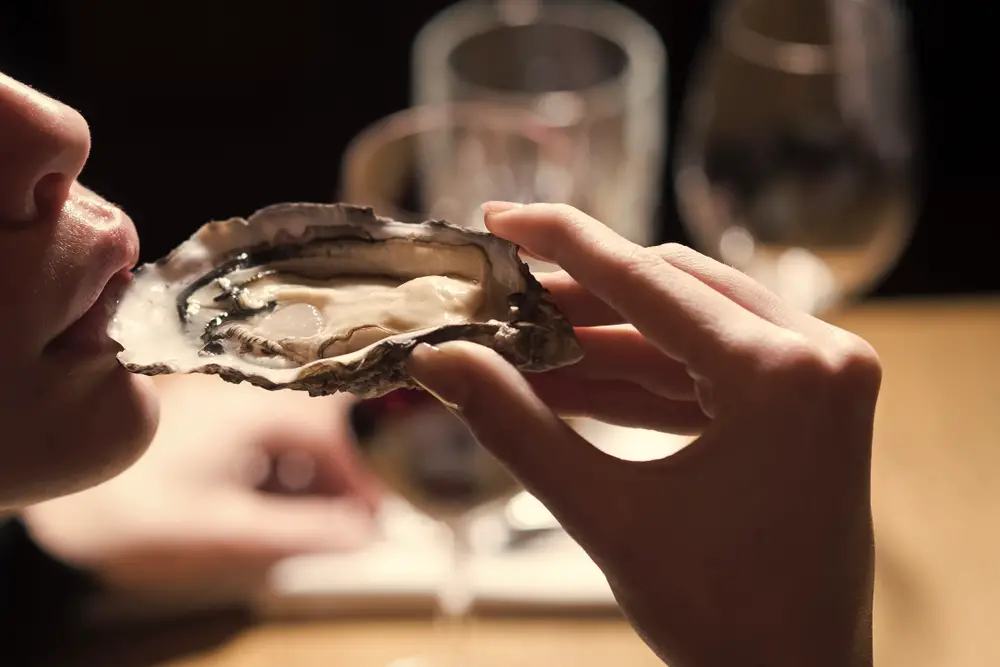Disclosure: Thank you for reading our articles! Some links may be affiliate links. We may get paid if you buy something or take an action after clicking one of these links. Additionally, as an Amazon Associate, I earn from qualifying purchases.
Whether you love them, hate them, or have never tried them, eating oysters has a tonne of nutritional benefits you may or may not be aware of.
Seafood can be hit and miss depending on your preferences, although it is often packed with nutrients as a lean protein. However, if you’re new to eating oysters you might be curious to know: How much protein is there in oysters?
In this article, I cover some key information about oysters and protein, from how many oysters equal 5 ounces of protein to how much raw protein is in oysters.
Keep reading to find out more.

How many oysters equal to 5 ounces of protein?
Seafood is rich in lean protein, healthy fats, and minerals. Oysters are incredibly versatile and can be enjoyed raw, from the shell, grilled, fried, or steamed, and incorporated into dozens of different dishes and cuisines for you to enjoy.
Whether you love them or hate them, there are a wide variety of different types of oysters and methods to prepare and eat them, and their flavorful meat is considered a delicacy all over the world.
Although oysters are renowned for their aphrodisiac qualities, these mollusks also bring a lot of health benefits to the table, too. So, what could you gain from eating oysters?
Health benefits of eating oysters
Namely, oysters are an excellent source of protein. How many oysters equal to 5 ounces of protein? Around 18 oysters equal 5 ounces of protein and all of the essential amino acids.
They are also considered to be a complete protein source, meaning they contain all nine essential amino acids that your body needs.
Like fish and other seafood, oysters are rich in omega-3 fatty acids, which are considered a healthy fat. Oysters also contain potassium, which can help to lower blood pressure.
That being said, incorporating oysters and other seafood into your diet is an effective strategy for supporting overall heart health.
Despite being low in calories, oysters are packed full of essential vitamins, minerals, and organic compounds. They’re an excellent source of protein, vitamin D, zinc, iron, and copper, and also have high levels of vitamin C, niacin, phosphorus, and vitamin B2.
Oysters are also great for helping you manage your weight if you are on a diet. This comes down to the fact that oysters are absolutely packed with nutrients as a lean protein and low-carb food, and the fact that they have one of the lowest calories-to-serving-size ratios of any food.
Choosing oysters when eating out can help you feel full and avoid high-calorie meals with less nutritional benefits.
That being said, if you’re trying to lose weight or make healthier choices in your everyday life, then you can enjoy the delicious taste of oysters without having to worry that you’ll be packing on the weight. They are a win-win!
How much protein in raw oysters?
When it comes to eating seafood, oyster meat (inner body) is highly delicious and nutritious. A 3.5-ounce or 100-gram serving of wild eastern oysters is just 68 calories, provides 3 grams of fat, and a whopping 7 grams of protein!
Although they can divide opinions and are not to everyone’s taste, you can’t deny that there is a tonne of health benefits to eating oysters.
That being said, although there are benefits, there are also dangers to eating raw oysters. Bearing this in mind, you should be aware of the risks of eating raw oysters before you try them, particularly as eating raw oyster meat poses a greater risk of bacterial infection.
Risks of eating raw oysters
Vibrio bacteria - These types of bacteria can be concentrated in filter-feeding shellfish, and eating them raw can increase the risk of you being exposed to them.
Infections due to these bacteria can lead to symptoms such as diarrhea, vomiting, running a fever, and even more serious conditions, such as the blood condition, septicemia, which in severe cases can lead to death if you don’t seek immediate medical attention.
Additionally, these mollusks may contain chemical contaminants, including heavy metals like lead, cadmium, and mercury. These substances enter the food chain much in the same way as air pollution does to humans.
We as humans exist in the medium of the air, and therefore, any pollution in the air enters our bodies.
Similarly, animals that live in an aquatic medium will naturally metabolize any contaminants in the water, which will then in turn bioaccumulate through the food chain and eventually reaching humans when they consume them.
Alongside this, shellfish allergies are common and may be triggered by exposure to oysters. Symptoms of a shellfish allergy can range from mild to severe, including hives or eczema to more serious anaphylaxis.
If you suspect you’re having an allergic reaction to shellfish, call for medical assistance immediately.
Due to these potential health risks, children, those with compromised immune systems, and pregnant or breastfeeding women should avoid always eating raw seafood to be safe.
Adding hot sauce, lemon juice, or drinking alcohol while eating oysters does not sufficiently kill any bacteria. That being said, if you are anxious about becoming sick and want to minimize your risk when eating oysters, the simplest solution is to avoid eating them raw.
There are so many ways to prepare and cook oysters that you shouldn’t feel limited, and when you’ve taken the time to cook them through, you’ll feel less anxious about it.
When it comes to buying oysters, make sure that you choose fresh oysters that have been harvested and processed according to safety guidelines. Alongside this, you will need to make sure that you examine them carefully before you cook them.
If you find any with broken shells, be sure to throw them away. Alongside this, tap any open shells with your finger - a live oyster should close its shell when you tap it. If it doesn't close, throw it away. Following these basic steps will ensure that you are as safe as possible when eating oysters.

